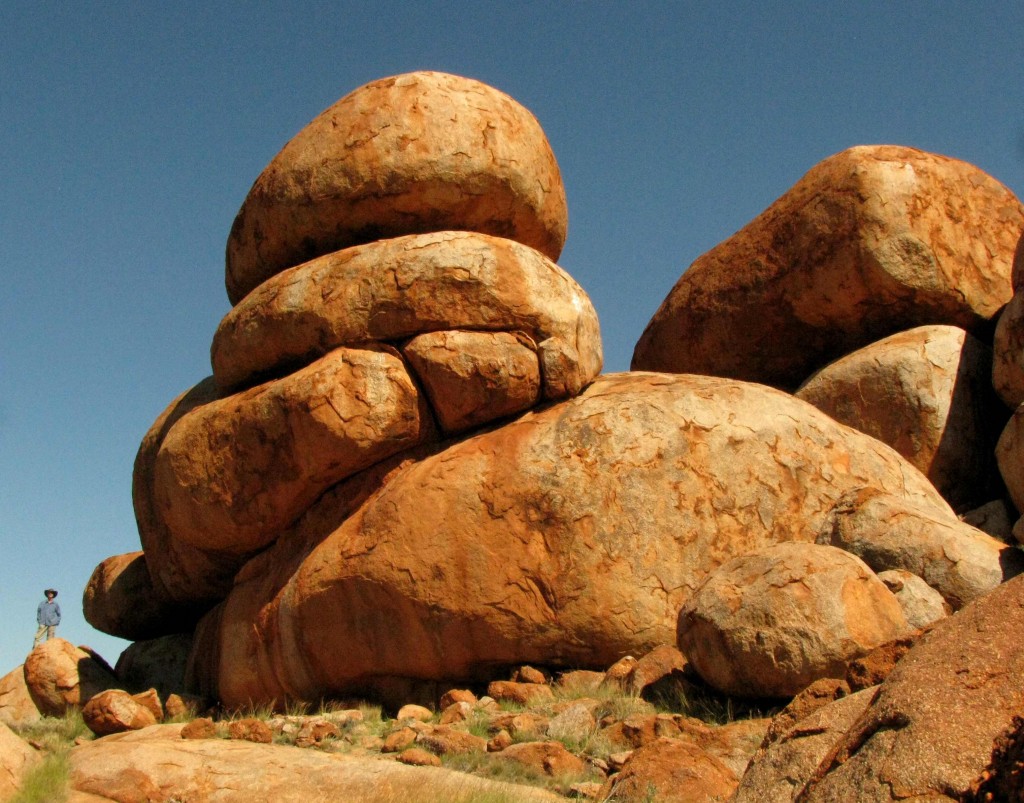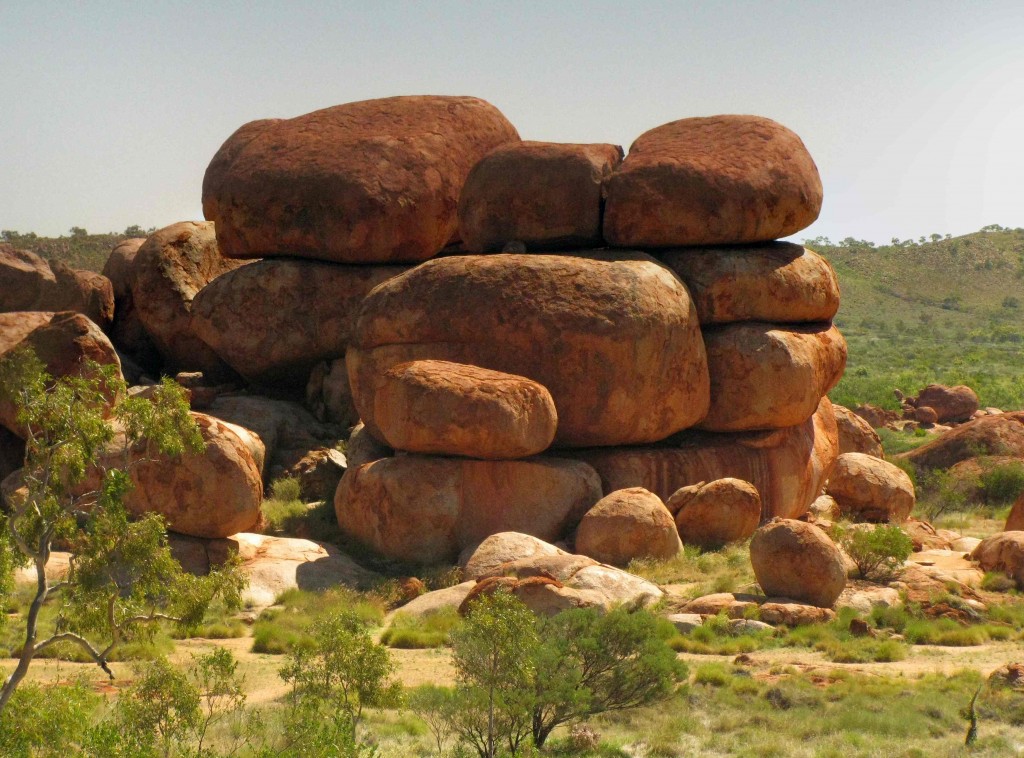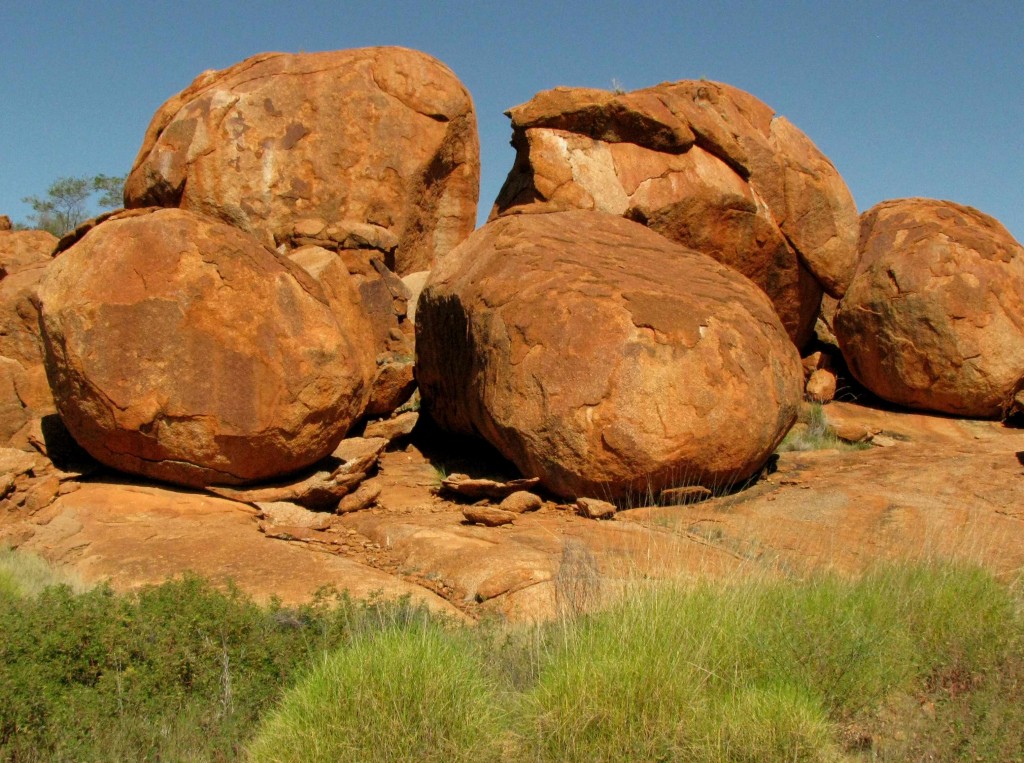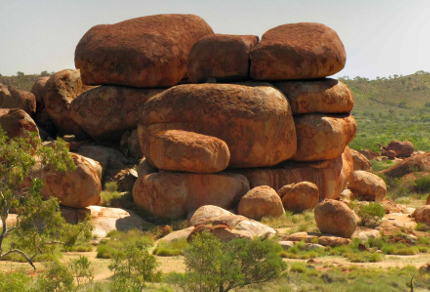
Vilis at Devils Marble Conservation Reserve, Northern Territory (© Magi Nams)
In 1872, during the construction of the Overland Telegraph Line in the central Northern Territory, John Lewis wrote of the presence of rounded granite boulders of astonishing size and arrrangement, which he referred to, for the first time in Australia’s written history, as Devils Marbles.1 Long before Europeans explored this continent, Aboriginal peoples knew of the red boulders and considered them to be the eggs of the Rainbow Serpent, their culture’s legendary creator who formed the land and populated it with animals and people during the Dreamtime.3 They named this place Karlu Karlu.
Located about 100 kilometres south of Tennant Creek, the Devils Marbles Conservation Reserve protects this collection of massive boulders, which Vilis and I explored en route to Alice Springs. They were, we learned, formed through a process of erosion. An interpretive sign led us through the steps in the boulders’ formation, which began many millions of years ago when magma pushed its way up within the earth’s crust, squeezing through old sandstone and then cooling and hardening into a layer of granite.1 As the granite cooled and shrank, cracks formed within it.1 Eventually, the layers of rock overlaying the granite eroded sufficiently for water to percolate down through the cracks in the granite and begin causing weathering of the igneous rock.1 Since the cracks within the granite were right-angle cracks, they essentially created blocks of rock that weathered most heavily at their edges, leading to a rounding of the blocks.1 Over time, overlaying rock completely disappeared, exposing the rounded boulders to even greater weathering by the elements.1

‘Cheeserings’ of Granite at Devils Marbles Conservation Reserve, Northern Territory (© Magi Nams)
Now, the granite boulders lie scattered over the desert landscape and are stacked and balanced in piles. Intriguingly, geolomorphologists refer to flattened, stacked boulders as ‘cheeserings’, and to pairs of rounded boulders stacked on top of each other as ‘cottage loaves.’1 The boulders continue to weather, wearing away from the outside and breaking into smaller chunks of rock. Vilis and I observed ‘scabs’ of granite loosely attached to the exteriors of boulders, and aggregations of boulders that looked as though they were the sharp-edged dregs of former, larger boulders. In the searing, mid-afternoon heat, the boulders radiated warmth and reflected the sun’s glare, transforming that patch of desert into an oven that seemed quite capable of firing marbles for devils or incubating a giant serpent’s eggs.

Eroding Granite Boulders at Devils Marbles Conservation Reserve (© Vilis Nams)
References:
1. Northern Territory Parks and Wildlife Commission, Devils Marbles Conservation Reserve. How the Devils Marbles Formed. Interpretive Sign.
2. Malcolm Gordon. Outback Australia: A Guide to the Northern Territory and Kimberley. Little Hills Press, Seven Hills, New South Wales, p. 321.
3. Australian Government, Culture.gov.au. The Dreaming. Updated 6-Mar-2010. Accessed 9-Oct-2010. http://www.cultureandrecreation.gov.au/articles/indigenous/dreamtime/


